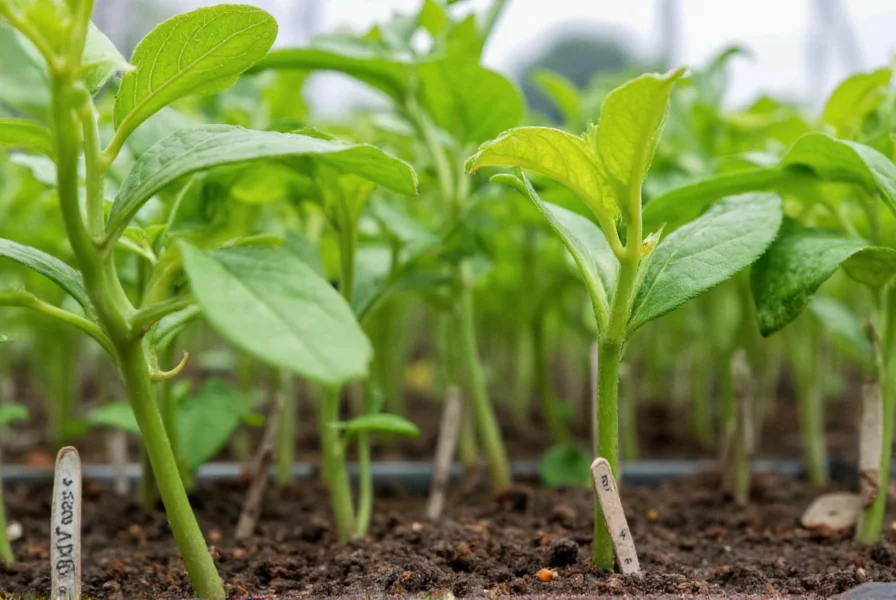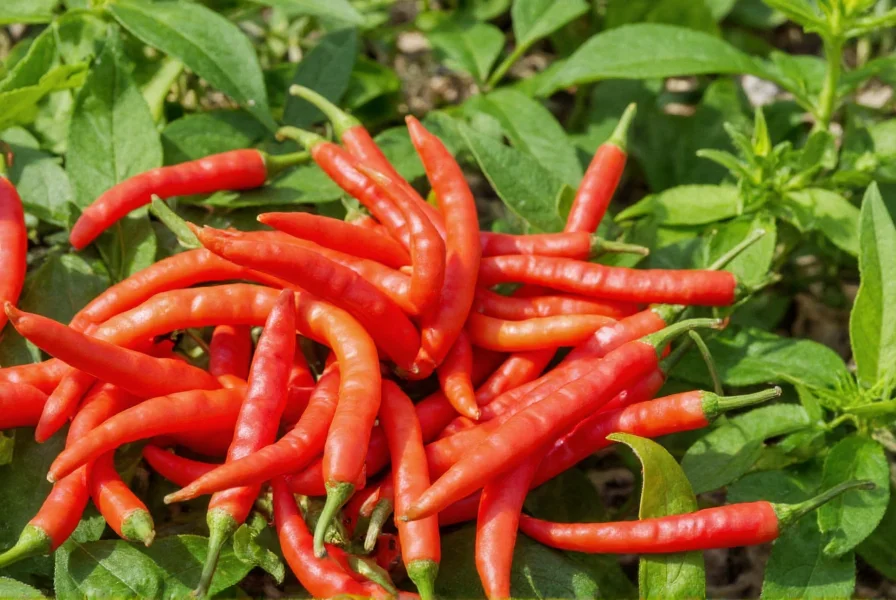When searching for pepper seeds for sale, gardeners need reliable information to make informed purchasing decisions. The right pepper seeds can transform your garden into a vibrant source of fresh produce, but selecting inappropriate varieties or low-quality seeds leads to disappointing harvests. This guide provides essential knowledge for finding and evaluating pepper seeds that will thrive in your specific growing conditions.
Understanding Pepper Seed Varieties Available for Purchase
Pepper varieties span an incredible spectrum from sweet bell peppers to intensely hot habaneros. When examining pepper seeds for sale, understanding these categories is crucial:
| Pepper Type | Scoville Range | Best Growing Conditions | Days to Maturity |
|---|---|---|---|
| Bell Peppers | 0 SHU | Cooler climates, consistent moisture | 60-90 days |
| Jalapeños | 2,500-8,000 SHU | Warm temperatures, well-drained soil | 70-80 days |
| Habaneros | 100,000-350,000 SHU | Hot, humid conditions | 90-120 days |
| Sweet Peppers | 0-500 SHU | Moderate temperatures, full sun | 65-85 days |
Heirloom pepper seeds for sale offer genetic diversity and historical significance, while hybrid varieties often provide improved disease resistance and consistent yields. Organic pepper seeds for sale have gained popularity among gardeners seeking chemical-free growing options. When browsing pepper seeds for sale online, pay attention to whether the seeds are open-pollinated (saving seeds possible) or hybrids (typically not suitable for seed saving).

Key Factors When Purchasing Pepper Seeds
Selecting the right pepper seeds requires careful consideration of several factors beyond just heat level. The best pepper seeds for home garden depend on your specific growing environment and culinary goals.
Climate compatibility represents the most critical factor many gardeners overlook. Some pepper varieties require longer growing seasons than others. In cooler northern climates, choose early-maturing varieties or start seeds indoors 8-10 weeks before your last frost date. Gardeners in hot southern regions can successfully grow longer-season varieties like ghost peppers or Trinidad scorpions.
Germination rates directly impact your planting success. Reputable sellers of pepper seeds for sale provide current germination percentages, typically 80% or higher for quality seeds. Avoid seeds with germination rates below 70% or those lacking this information entirely. Proper storage conditions significantly affect seed viability—look for seeds stored in cool, dry environments.
Where to Find Reliable Pepper Seeds for Sale
Knowing where to buy pepper seeds online or locally makes a substantial difference in seed quality and variety selection. Several trustworthy sources exist for gardeners seeking quality pepper seeds:
- Specialty seed companies often provide the widest selection of unique and heirloom pepper varieties. These companies typically focus exclusively on seeds, ensuring expertise in seed production and storage.
- Local nurseries offer regionally adapted varieties and personalized advice. Staff can recommend pepper seeds for sale near me that perform well in your specific microclimate.
- Agricultural extension services sometimes provide regionally tested varieties through cooperative programs.
- Seed exchanges and gardening clubs connect you with fellow gardeners sharing locally adapted varieties.
When evaluating where to buy pepper seeds online, check for transparent information about seed origin, harvest dates, and storage conditions. The best websites selling pepper seeds provide detailed growing information and customer support for planting questions. Look for companies that offer replacement seeds if germination issues occur.
Evaluating Seed Quality Before Purchase
Not all pepper seeds for sale offer equal quality. Savvy gardeners examine several indicators before making a purchase:
Packaging information should include the specific variety name (not just "hot pepper"), days to maturity, plant height, and expected yield. Reputable sellers provide the seed lot number and harvest year. Seeds remain viable for 2-3 years when properly stored, so check for current season packaging.
Certifications indicate quality standards. Look for organic certification through USDA or equivalent bodies in your country. Non-GMO Project verification provides assurance for gardeners seeking non-GMO pepper seeds for sale. Some premium seeds carry disease resistance codes indicating protection against common pepper pathogens.

Avoiding Common Pepper Seed Purchasing Mistakes
Many gardeners make preventable errors when buying pepper seeds. Understanding these pitfalls helps ensure successful harvests:
Misjudging heat tolerance leads to disappointing results. The Scoville scale measures capsaicin concentration, but individual tolerance varies. If you're new to hot peppers, start with milder varieties like poblano before attempting ghost peppers. When purchasing extremely hot pepper seeds for sale, verify they're appropriate for your intended use—some super-hots work better for sauces than fresh eating.
Ignoring regional adaptation causes many failed crops. Peppers developed for tropical climates often struggle in temperate zones and vice versa. Consult regional gardening resources to identify varieties proven successful in your area. Local agricultural extensions provide valuable guidance on the best pepper seeds for your specific region.
Overlooking shipping conditions affects seed viability. During hot summer months, seeds shipped without temperature protection may lose viability. Reputable sellers use insulated packaging during extreme temperatures. If ordering non-GMO pepper seeds for sale during summer, confirm the company has appropriate shipping protocols.
Preparing for Successful Pepper Seed Planting
Purchasing quality pepper seeds represents just the first step. Proper planting techniques maximize your investment:
Peppers require warm soil (70°F/21°C minimum) for germination. Start seeds indoors 8-10 weeks before your last frost date using seedling heat mats for best results. Use a quality seed starting mix rather than garden soil, which may contain pathogens. Maintain consistent moisture without waterlogging—the "damp sponge" test works well (seeds should feel moist but not dripping).
When transplanting seedlings outdoors, wait until nighttime temperatures consistently stay above 55°F (13°C). Harden off plants gradually by exposing them to outdoor conditions over 7-10 days. Space plants 18-24 inches apart in well-draining soil amended with compost. Most pepper varieties benefit from consistent watering and mulching to maintain soil moisture.
Frequently Asked Questions
How long do pepper seeds remain viable when stored properly?
Properly stored pepper seeds maintain good germination rates for 2-3 years. Store seeds in airtight containers in a cool, dark, dry place—ideally at 40°F (4°C) with 20-30% humidity. Refrigeration extends viability, while freezing (with proper moisture control) can preserve seeds for 5+ years. Always check germination rates before planting older seeds.
What's the difference between heirloom and hybrid pepper seeds?
Heirloom pepper seeds come from open-pollinated varieties passed down through generations, typically at least 50 years old. They produce plants true to type when seeds are saved. Hybrid pepper seeds (designated F1) result from controlled cross-pollination of two distinct parent plants, offering improved disease resistance and uniformity but don't produce reliable seeds for saving. Both types have value depending on your gardening goals.
How can I verify if pepper seeds are non-GMO?
Look for official Non-GMO Project verification on the seed packet or company website. Reputable sellers of non-GMO pepper seeds for sale provide transparent sourcing information and testing protocols. Most vegetable seeds available to home gardeners are non-GMO, as commercial GMO pepper varieties are primarily for large-scale agriculture. When in doubt, contact the seed company directly for their GMO policy documentation.
What should I look for in quality pepper seed packaging?
Quality pepper seed packaging includes the specific variety name, days to maturity, plant characteristics, germination rate, harvest year, and seed count. It should indicate organic certification if applicable and provide basic growing instructions. Reputable companies include their contact information and often a lot number for traceability. Avoid seeds with vague descriptions like "assorted hot peppers" or lacking essential growing information.
Can I save seeds from peppers I grow for future planting?
You can save seeds from open-pollinated or heirloom pepper varieties, but not from hybrid (F1) varieties which won't produce true-to-type plants. To save seeds properly, select fully ripe, preferably overripe peppers. Scoop out seeds, rinse thoroughly to remove pulp, and dry completely on paper towels before storing in airtight containers. Properly saved seeds maintain viability for 2-3 years when stored in cool, dark, dry conditions.











 浙公网安备
33010002000092号
浙公网安备
33010002000092号 浙B2-20120091-4
浙B2-20120091-4